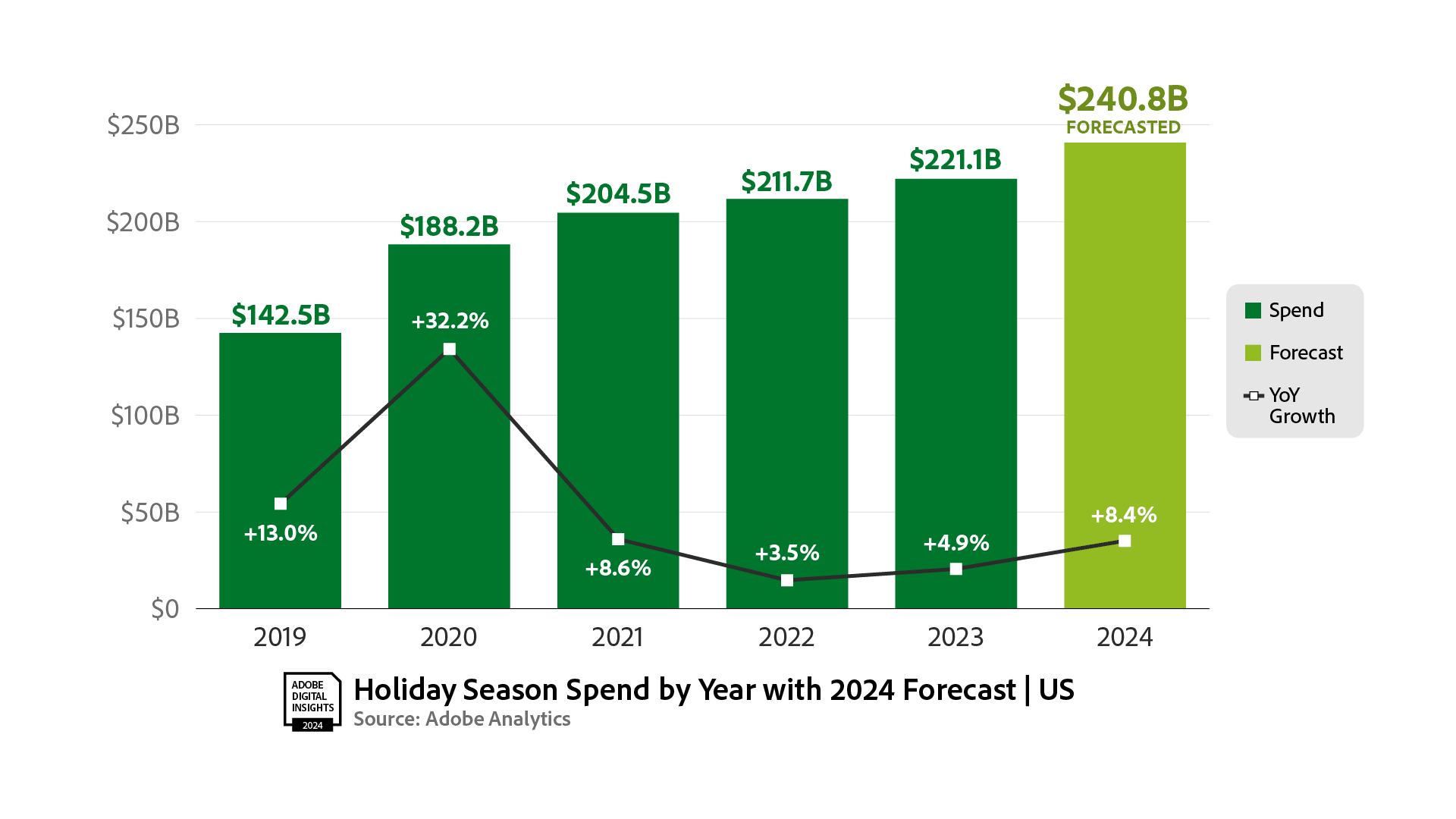U.S. online holiday sales are projected to hit a record $253.4 billion, but growth will slow to 5.3% as persistent inflation and tariffs temper both consumer spending and retailer discounts.

October 6, 2025

Source:
eMarketer
Record Online Sales Expected Amid Slower Growth
The U.S. online holiday shopping season is forecast to set new records, though its growth is poised to slow. According to a new forecast from Adobe Analytics, sales from November 1 to December 31 are expected to reach $253.4 billion.
This figure represents a 5.3% increase year-over-year. However, this growth marks a significant deceleration from the 8.7% jump seen in the 2024 season, signaling a potential shift in consumer behavior.
Contrasting Forecasts
Data from the Mastercard Economics Institute (MEI) supports the trend of robust online activity. MEI projects a 7.9% growth in e-commerce sales, which starkly contrasts with its forecast of just 2.3% growth for in-store retail.
Overall, MEI predicts total retail sales, excluding automobiles, will rise by a modest 3.6% during the holiday period.
Keep up with the story. Subscribe to the PR+ free daily newsletter

Source:
MarketWatch
Key Shopping Days and Discount Outlook
While the overall season shows moderated growth, specific days are still expected to drive massive sales volumes. Cyber Monday will continue its reign as the single biggest online shopping day.
Cyber Week Projections
Cyber Monday: Expected to generate $14.2 billion in sales, up 6.3% from last year.
Black Friday: Forecast to see even stronger growth in online sales, with an anticipated increase of 8.3%.
The higher growth rate for Black Friday's online component suggests a continuing shift in how consumers approach the traditional start of the holiday shopping season.
Discounts to Remain Flat
Shoppers hoping for deeper discounts this year may be disappointed. Projections indicate that holiday promotions will be comparable to 2024, with maximum discounts hovering around 28% off listed prices.
Retailers are navigating a challenging environment of persistent inflation and ongoing tariffs. As a result, many are expected to absorb some increased costs rather than pass them entirely to consumers, leading to more cautious discounting strategies aimed at preserving profit margins.
Read More

Source:
Adobe Newsroom
Share this news:




















